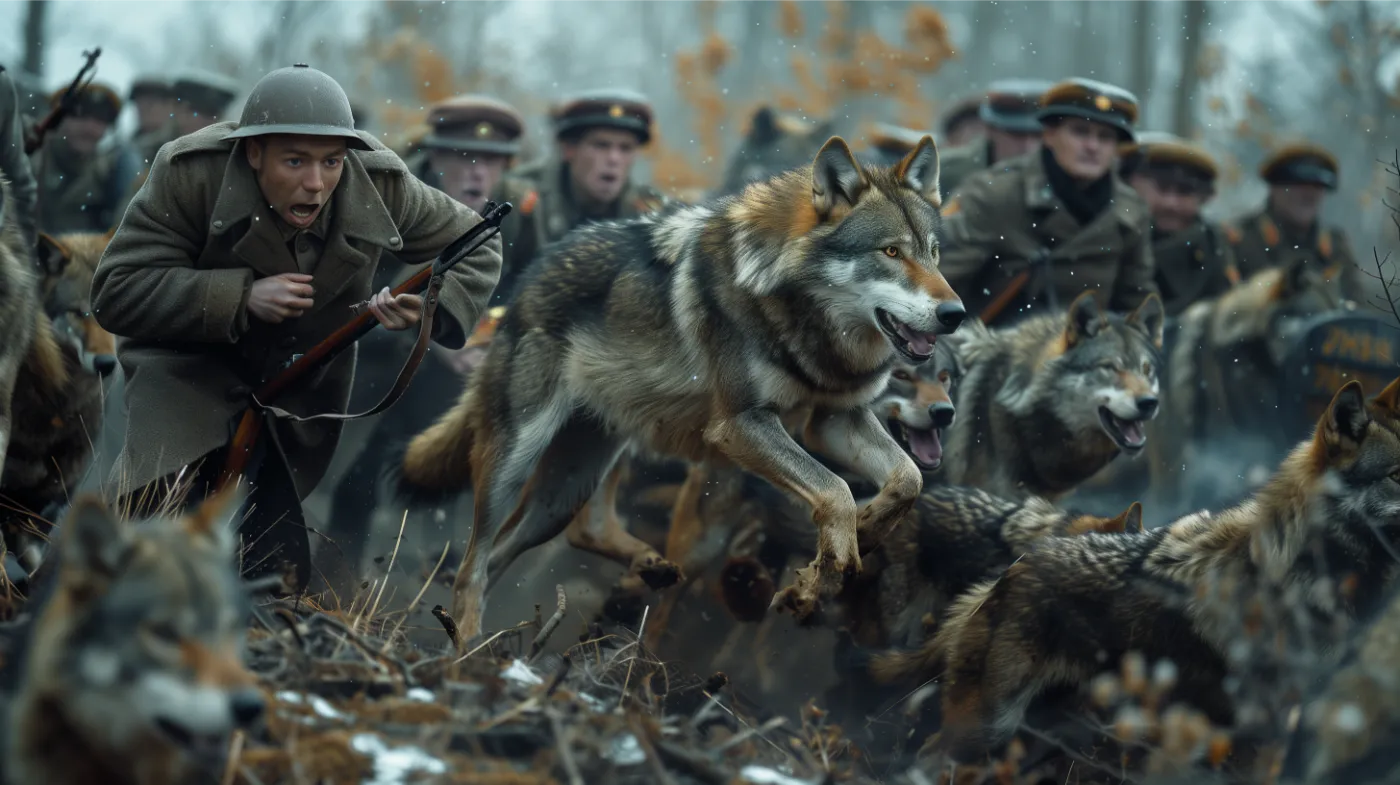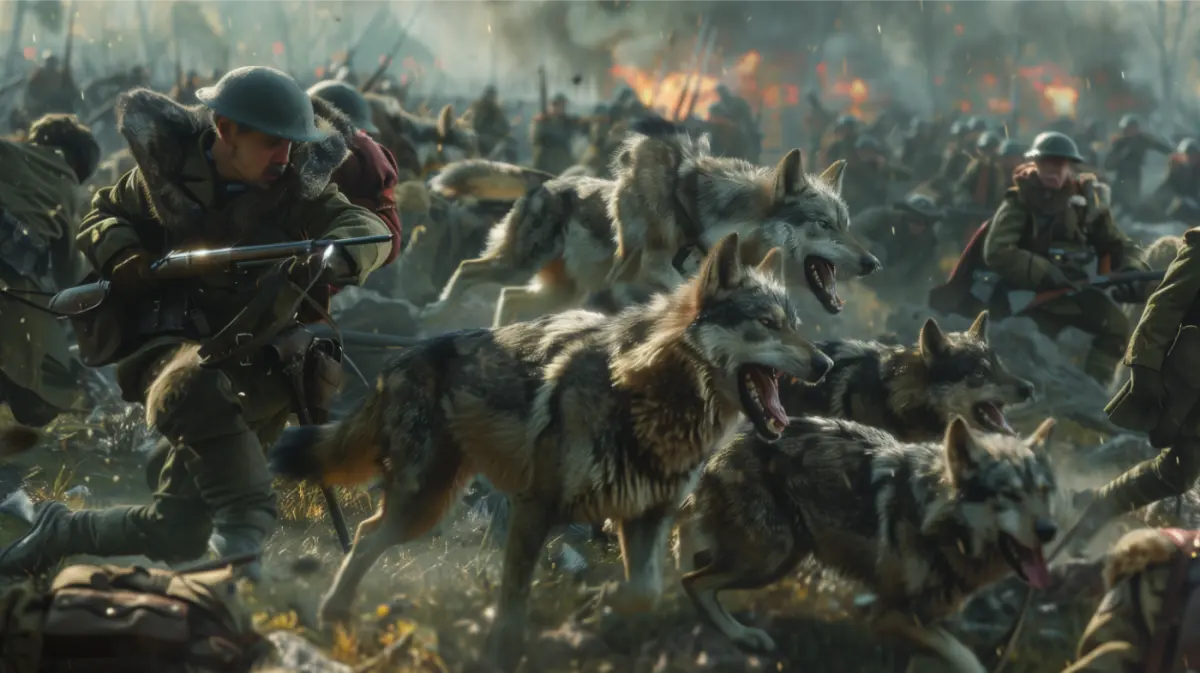The Howling Horrors: Wolf Attacks in WWI

You think trench warfare was bad? Try facing a pack of ravenous wolves in the middle of a frigid winter. During World War I, soldiers on both sides of the Eastern Front found themselves in a rather hairy situation – quite literally.
As the harsh winter of 1916-1917 set in, packs of wolves, driven by hunger and the desolation caused by the war, became a significant problem in the battle zones of the Eastern Front and parts of France. At the peak, it's estimated that over 200 wolves were roaming the battlefield, their normal ecosystem disrupted by the movements of armies and the sounds of warfare, forcing them into closer contact with humans.
A Temporary Truce
Reports from the time describe terrifying attacks on soldiers and civilians alike. In some cases, the threat was so severe that commanders on both sides signed temporary armistices to band together and hunt down the voracious animals. One particularly harrowing account tells of a French soldier who was attacked and partially eaten by wolves while on sentry duty.

A Howling Nightmare
Imagine this nightmarish scenario: You're a soldier, huddled in a trench, already living in constant fear of enemy fire. But now, you have to worry about being mauled by a pack of wolves too? Talk about adding insult to injury!
One of the strangest stories comes from the town of Kirov, Russia, where a pack of wolves reportedly killed and ate over 30 villagers in a span of just three weeks. The attacks were so brazen that the wolves would even enter houses and drag people out of their beds!
Wolf Whisperers?
The stories of these wolf attacks are both horrifying and fascinating, reminding us that even in the midst of one of the most devastating conflicts in human history, nature could still find a way to throw a curveball.

But perhaps the most surprising twist is the account of German and Russian forces temporarily banding together to hunt the wolves. Imagine the scene – bitter enemies, who just moments ago were trying to kill each other, suddenly becoming unlikely allies in the face of a common, furry foe.
A Lesson Learned?
While the idea of German and Russian forces teaming up to hunt wolves might seem like an unlikely alliance, it just goes to show that when faced with a common enemy, even the bitterest of foes can find common ground – even if that enemy happens to be of the four-legged, furry variety.
So, the next time you're tempted to complain about your job, just remember: at least you don't have to worry about wolf attacks during your morning commute! Unless, of course, you work in a remote, war-torn region where the natural order has been disrupted. In that case, you might want to invest in some good running shoes.
The Paw that Refreshes
Of course, not all encounters between man and wolf during WWI were of the violent variety. One peculiar story tells of a Russian soldier who befriended and trained a wolf pup he found abandoned on the battlefield. The two became inseparable companions, with the wolf even accompanying the soldier into battle on occasion.
Perhaps this unlikely bond between soldier and beast is a reminder that even in the darkest of times, the human spirit can find a way to form connections in the most unexpected of places.
